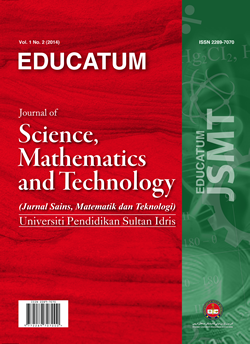Microcontroller-based Fertigation Farming Automation System
DOI:
https://doi.org/10.37134/ejsmt.vol9.2.7.2022Keywords:
Fertigation System, Arduino Microcontroller, AutomationAbstract
Fertigation is a technique that combines plant fertigation and irrigation that becomes most used by the commercial farmers as well as home growers. However, fertigation systems required a constant water supply and the exact amount of nutrient that plant needed as it changes depending on their growth. The paper aims to research, create, built, test and implement an automatic mixing fertilizer by implementing Total Dissolved Solids (TDS) monitoring system according to the plant’s nutrient level needed. It is also exploring the potential of optimum water usage by constructing an automatic timer for watering the plants according to the routine schedule. The system used an Arduino UNO R3 as a microcontroller. TDS sensor sense and measure the dissolved solids in a nutrient solution which gives information on the number of nutrients or impurities in TDS value. In an automatic watering system, the pump is running according to the timer set by a microcontroller. The frequency of distribution and the concentration of the solution depends on the weather conditions and the level of the crop. Hot weather requires more amount and frequency of fertilizer but in dilute solution. As such, this system has demonstrated a cost-effective, sustainable, eco-friendly, and safe environment as a result it will produce fresh and healthy plants that can give benefits to living things.
Downloads
References
Purendra Singh. (2019). Laboratory Instrumentation and Technique. Dwarka, New Delhi.
Michael I. Rich. (2018). Gardening: Hydroponics Ð Learn the "Amazing Art" of Growing: Fruits, Vegetables, & Herbs, without Soil. Lulu.com
Ashwikumar Marimuthu. (2015). Kaedah Menyediakan Baja Fertigasi. Jabatan Pertanian Negeri Terengganu.
M. Naeem, Abid A. Ansari, Sarvajeet Singh Gill. (2017). Essential Plant Nutrients: Uptake, Use Efficiency, and Management. Springer.
Tom Alexander. (2000). Best of Growing Edge: Popular Hydroponics and Gardening for Small Commercial Growers. New Moon Publishing, Inc.
Hans Lambers, F Stuart Chapin III, Thijs L. Pons. (2008). Plant Physiological Ecology. Springer Science & Business Media
Bobbie Kalman. (2007). Living Things Need Water. Crabtree Publishing Company.
Jackie Clegg, Jason White. (2008). Science. Letts and Lonsdale.
Adegboye, M. A., Ajao, L. A., Folorunso, T. A., Mamudu, A. Y., & Isah, A. S. (2017). Automatic fertilized-irrigation control and management system. FUW Trends in Sci. & Techn. J, 2(2), 801-805.
Abd, M. K. I., Buyamin, S., Abidin, M. Z., & Mokji, M. M. (2018). Development of Automatic Mixing Process for Fertigation System in Rock Melon Cultivation. International Journal of Electrical and Computer Engineering, 8(3), 1913.
Pretty, J.N. (1995) Participatory Learning for Sustainable Agriculture. World Dev. 23, 1247–1263.
Downloads
Published
How to Cite
Issue
Section
License
Copyright (c) 2022 Nor Shafarina Anuar, Zarina Baharudin Zamani, A Nasoruddin Mohamad, Anuar Aina Safiqa , Nor Azura Sabirrullah

This work is licensed under a Creative Commons Attribution-NonCommercial-ShareAlike 4.0 International License.





